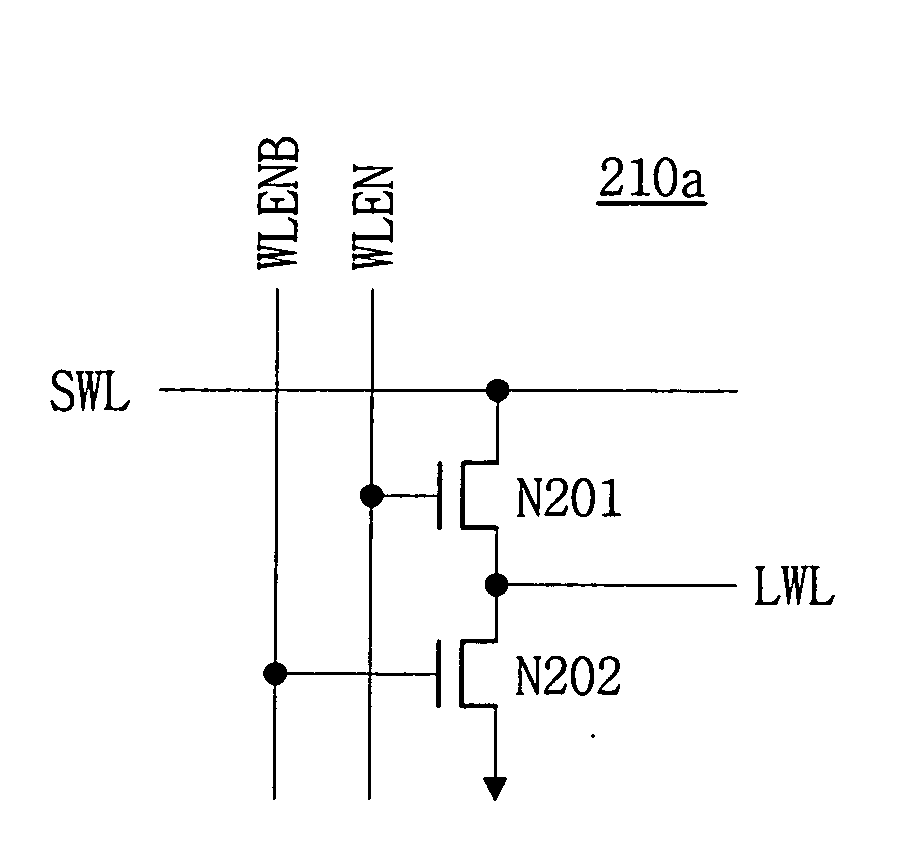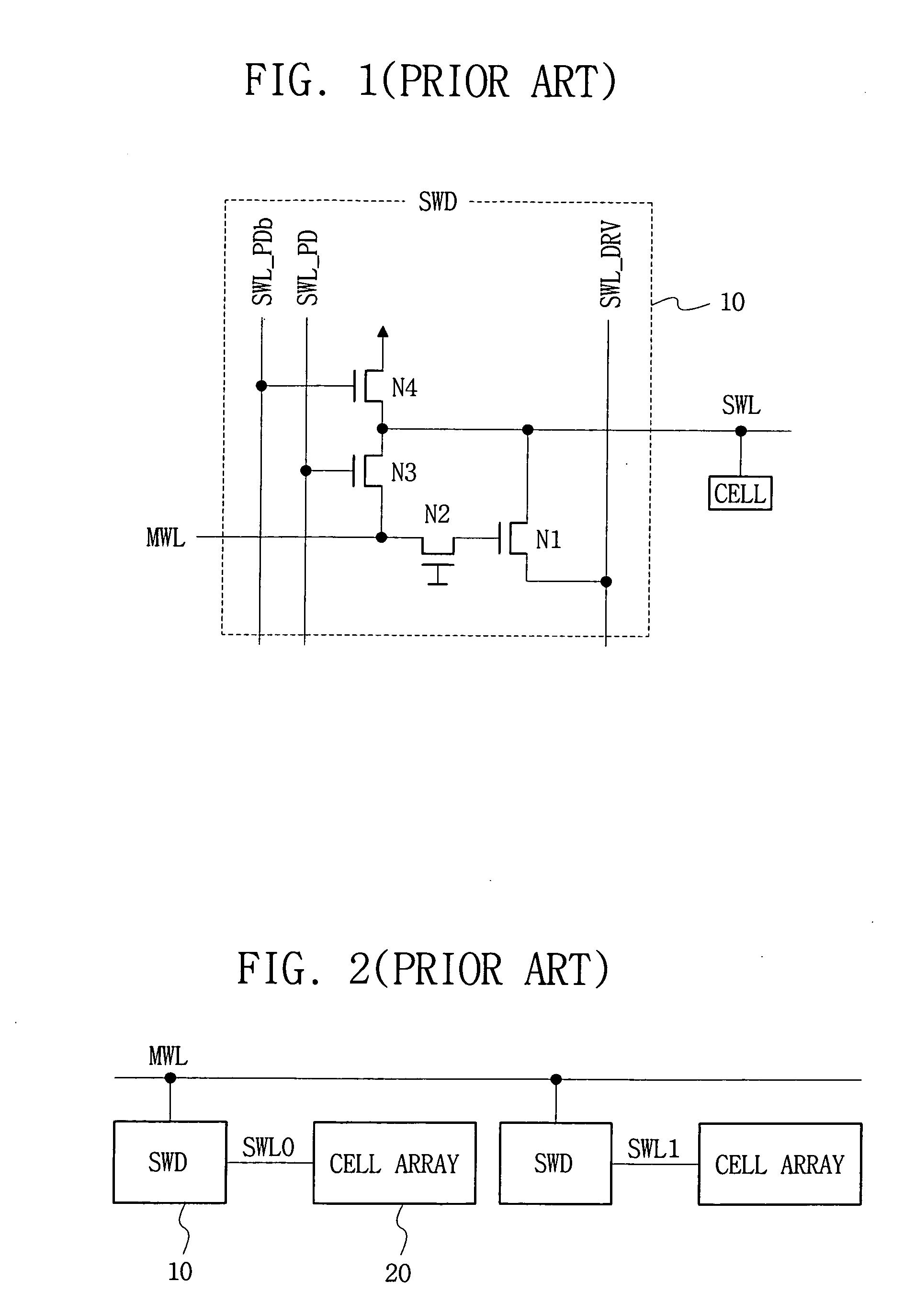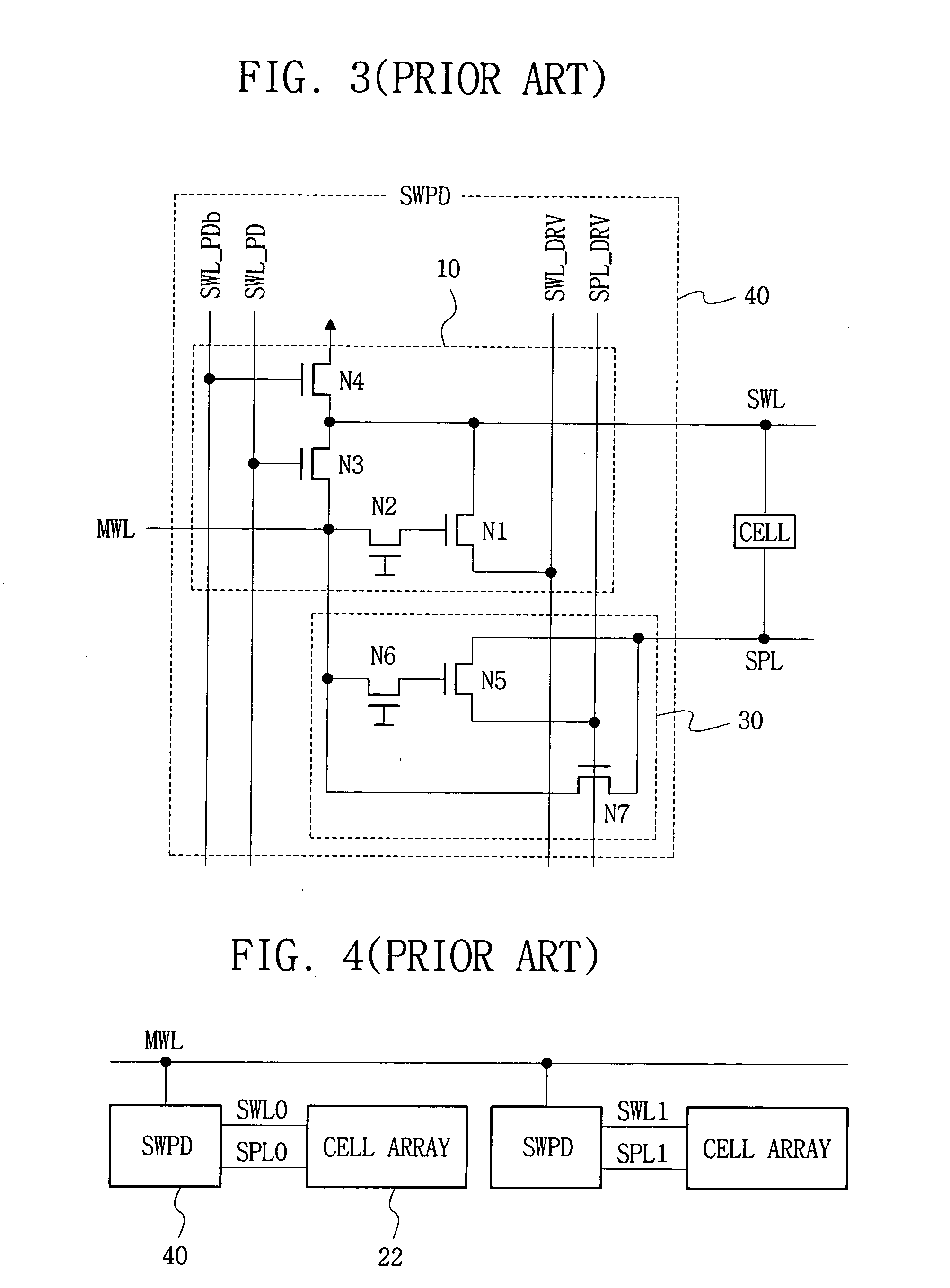Line driver circuit for a semiconductor memory device
a technology of memory device and driver circuit, which is applied in the direction of static storage, digital storage, instruments, etc., can solve the problems of increasing chip size, limited number of memory cells that can be controlled by each word line driver circuit, and increasing chip siz
- Summary
- Abstract
- Description
- Claims
- Application Information
AI Technical Summary
Benefits of technology
Problems solved by technology
Method used
Image
Examples
Embodiment Construction
[0042]FIGS. 5 and 11 illustrate a representative part of the layout of a semiconductor memory device according to an embodiment of the invention. In the following description a sub word line will be represented by reference symbol ‘SWL’, a sub word line driver circuit by reference symbol ‘SWD’, a local word line by reference symbol ‘LWL’, and a local word line driver circuit by reference symbol ‘LWD’.
[0043]FIG. 5 is a block diagram illustrating the layout of word line driver circuits in a semiconductor memory device according to an exemplary embodiment of the invention.
[0044] Referring to FIG. 5, a word line driver circuit in a semiconductor memory device according to an exemplary embodiment has a three-stage structure: of a main word line MWL controlled by a word line decoder circuit (not shown); sub word lines SWL controlled by sub word line driver circuits; and local word lines LWL controlled by local word line driver circuits LWD.
[0045] For example, in FIG. 5 there is shown o...
PUM
 Login to View More
Login to View More Abstract
Description
Claims
Application Information
 Login to View More
Login to View More - R&D
- Intellectual Property
- Life Sciences
- Materials
- Tech Scout
- Unparalleled Data Quality
- Higher Quality Content
- 60% Fewer Hallucinations
Browse by: Latest US Patents, China's latest patents, Technical Efficacy Thesaurus, Application Domain, Technology Topic, Popular Technical Reports.
© 2025 PatSnap. All rights reserved.Legal|Privacy policy|Modern Slavery Act Transparency Statement|Sitemap|About US| Contact US: help@patsnap.com



